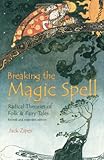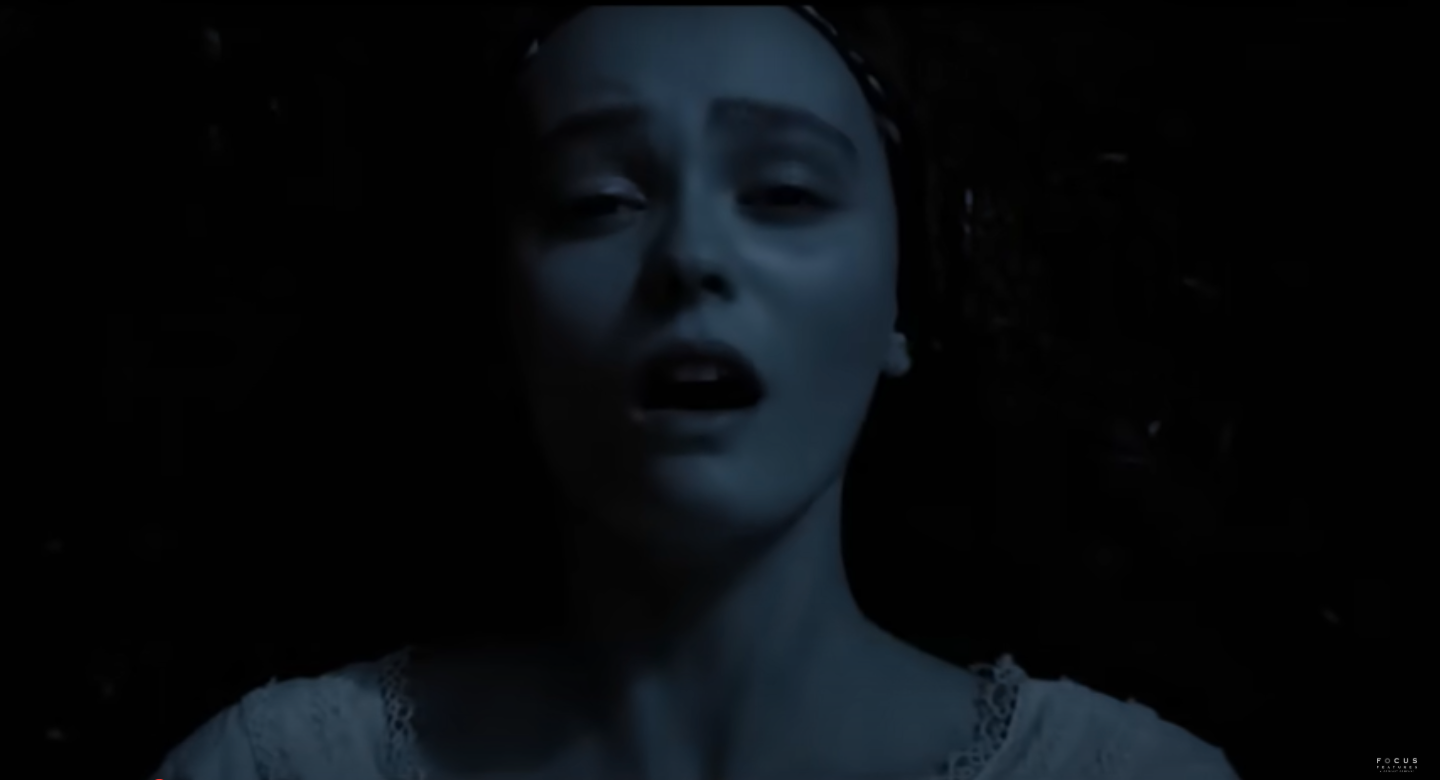Once upon a time, when the famous scientist Albert Einstein worked at the Institute for Advanced Study in Princeton, a tiny old woman approached him as he was walking home. She was schlepping a skinny young boy of about six who was dragging his feet.
“Meester Einstein,” she called out in a strong Central European accent. “Meester Einstein, stop your tracks and help me!”
Einstein was taken aback. He didn’t know what to do except stop.
“How can I help you?” he responded with a smile as he took out a pipe.
“Meester Einstein, stop. You shouldn’t smoke. It will kill you,” the old woman said.
Again, Einstein was taken aback, and he put away his pipe.
“Is that better?”
“Much better,” the old woman said as she drew her timid grandson toward Einstein. “Jaky, stop fiddling and listen to this great man.”
Now she turned her attention back to Einstein.
“Meester Einstein, I want you should tell me what my grandson must do to become educated like you. I want he should be a great scientist.”
Einstein didn’t hesitate with his reply. “Fairy tales. He should read fairy tales.”
“All right,” the woman replied. “But what then? What should he read after that?”
“More fairy tales,” Einstein stated bluntly. He took out his pipe and continued walking toward his home.
The old woman was silent for a moment, but then she grabbed hold of Jaky’s hand and began dragging him through the park again. Suddenly, she stopped.
“You heard, Jaky!” She pointed her finger at the frightened boy. “You heard what the great man said! Read fairy tales! Do what the man said, or God help you!”
And she whisked her grandson away.
This is a “true” tall tale, not a fairy tale. I must confess that the boy in this preposterous anecdote was me, and I have lived under Einstein’s spell ever since my momentous encounter with the great man in 1943. Or perhaps one could call the spell my grandmother’s curse. Whether spell or curse, I can’t recall not imbibing fairy tales. They are in my blood. Ever since my grandmother made her fateful introduction, I have constantly collected fairy tales, read them, written them, studied them, and even lived them. My wife thinks I am like the golden boy of fairy tales—that is, she thinks that Lady Fortuna watches over me and changes everything I touch into gold. She also thinks that I’m a fairy-tale junkie. Addicted. For years, I have spent most of my research time at library sales, auctions, flea markets, garbage dumps, and garage sales and in secondhand bookstores, musty libraries, book stalls, movie theaters, cellars, attics, and museums. My daughter, who has tolerated my tale-telling and fairy-tale obsession since she was born, has offered to ship me off and pay for a fairy-tale detox program run by rational, stringent, down-to-earth social workers. Lately, however, she has concluded that I’m hopeless and helpless.
I may be helpless, but I’m not hopeless. The hope embedded in fairy tales has driven me throughout my life, and perhaps it is hope that drove Einstein. There is something peculiar about fairy tales, the best of fairy tales, that propels me. Moreover, I am not alone: I have learned about the complexities of life through these wonder narratives, and especially through buried treasures that I have discovered and decided to share with interested readers. But before I talk about these fairy-tale treasures, I want to theorize a bit about why we cannot do without fairy-tale narratives and art, and why my obsession with fairy tales might be a sane response to a sick world.
As a narrative metaphor or metaphorical pattern, a fairy tale, like other short narratives—anecdotes, jokes, legends, myths, warning tales, and so on—stems from historically conditioned lived experience that fosters a reaction in our brains, and this experience is articulated through symbols that endow it with significance. Fairy tales are relevant because they pass on information vital for human adaptation to changing environments. I do not want to privilege the fairy tale, or more precisely, the oral wonder tale as the only type of narrative or the best means by which we communicate our experiences and learn from one another. But it does seem to me that the fairy tale offers a metaphorical means through which we can gain distance from our experiences, sort them out, and articulate or enunciate their significance for us and for other people in our environment.
Over thousands of years, fairy tales have come to form a linguistic type, a genre, a means by which we seek to understand and contend with our environment, to find our place in it. There are many types, genres, and means of narration. Our predilection for certain fairy tales reveals something about ourselves and our cultures. Every family and society in the world has developed types, genres, and communicative means that produce cultural patterns and enable people to identify themselves and grasp the world around them. Sometimes these communicative means or media have contributed to the formation of spectacles and illusions that prevent us from understanding our empirical experiences. Some critics have proposed that cultural industries have formed, and these industries systematically obfuscate or cloud our vision of the world and generate metaphors that do not lead to cognition or an understanding of how societies function. We live in a conflicted world, a world filled with conflicts, and fairy tales can be used by all of us for enlightenment or abused by small groups of powerful people who seek domination.
In my own life, I have been both a scholar of fairy tales and an opportunistic scavenger. According to the Oxford Universal Dictionary, a scavenger in 1503 was “an officer whose duty was to take (to ‘scavage’), that is, to take tolls and later to keep the streets clean. It was a person whose employment was to clean streets by scraping or sweeping together and removing dirt. One who collects filth; one who does dirty work. A scavenger is also a collector of junk and one who labors for the removal of public evils.” Some philosophers have claimed that we can learn more about a society by collecting and studying its refuse than by collecting and studying its fine art and accomplishments. There is a great deal of truth to that proposition, and I like to consider myself as a scavenger who unearths discarded and forgotten tales that speak to crucial questions of human struggles and social conflicts. I like to collect buried tales that contain gems filled with hope and that illuminate a path to a better world. Ever since I was young, I have been an excavator as well as a scavenger—digging for inspiring tales that shed light on the human condition and penetrate the illusions of the society of the spectacle. Like a fairy-tale hero, quite often the little underdog, I have learned to grab hold of opportunities and make the most of them. Addicted as I am, I follow each and every clue to link the fairy tales to one another and to the lives of forgotten storytellers and artists—people and tales living on the edge of societies, in the nooks and crannies. I travel widely, learn different languages, meet all kinds of people, and their creations excite my curiosity and keep me wondering about serendipity in my life—how we all need serendipity.
My scholarly work has always stemmed from the side of me that has questioned what I am doing and why. Fortunately, this critical side has led me to appreciate and analyze the virtues of the discarded, the marginal, and the dispossessed that, for me, are buried treasures.

 My scavenger and excavation work began in earnest in the late 1970s, when I was writing a critical study called Breaking the Magic Spell: Radical Theories of Folk and Fairy Tales. Around that time, I read and was revolted by Bruno Bettelheim’s The Uses of Enchantment, which really should be called the misuses of enchantment, and sheds light on the weaknesses of psychology and psychiatry. My exposure to Bettelheim, and also to Freud, led me to conduct storytelling in public schools to test his and my own theories of how children relate to fairy tales. Aside from exploring how children react to, comprehend, and use traditional fairy tales, I wanted to introduce children to variants of the classical tales and compare their different perspectives on these tales. The storytelling project also led me to a research project: to gather as many versions and variants of “Little Red Riding Hood” as I could to see whether Bettelheim’s pseudo-Freudian interpretation of the tale—which, for him, represented a simplistic oedipal conflict—held any water compared to my approach, which viewed the tale as one about rape, in which girls are explicitly declared responsible for their own violation. In this case, it is important to bear in mind that Perrault ended his “classical” version of the tale by insisting that little girls who invite wolves into their parlors deserve what they get!
My scavenger and excavation work began in earnest in the late 1970s, when I was writing a critical study called Breaking the Magic Spell: Radical Theories of Folk and Fairy Tales. Around that time, I read and was revolted by Bruno Bettelheim’s The Uses of Enchantment, which really should be called the misuses of enchantment, and sheds light on the weaknesses of psychology and psychiatry. My exposure to Bettelheim, and also to Freud, led me to conduct storytelling in public schools to test his and my own theories of how children relate to fairy tales. Aside from exploring how children react to, comprehend, and use traditional fairy tales, I wanted to introduce children to variants of the classical tales and compare their different perspectives on these tales. The storytelling project also led me to a research project: to gather as many versions and variants of “Little Red Riding Hood” as I could to see whether Bettelheim’s pseudo-Freudian interpretation of the tale—which, for him, represented a simplistic oedipal conflict—held any water compared to my approach, which viewed the tale as one about rape, in which girls are explicitly declared responsible for their own violation. In this case, it is important to bear in mind that Perrault ended his “classical” version of the tale by insisting that little girls who invite wolves into their parlors deserve what they get!
 My scavenging and excavating eventually led me to produce The Trials and Tribulations of Little Red Riding Hood (1983), in which I published thirty-five different versions of the tale type from the seven hundred or more that I had collected and continue to collect. Important for me in my comparative study were the buried treasures—that is, the neglected fairy tales that demonstrated different modes of storytelling and suggested alternatives to Red Riding Hood’s struggle with her violator. Two of the tales that struck me most, especially because I used them in my role as storyteller with children and adults, were Catherine Storr’s “Little Polly Riding Hood” (1955) and Gianni Rodari’s “Little Green Riding Hood” (1973). Both had been unknown to me and the American reading public, as were a good many other “Red Riding Hood” versions published in my book.
My scavenging and excavating eventually led me to produce The Trials and Tribulations of Little Red Riding Hood (1983), in which I published thirty-five different versions of the tale type from the seven hundred or more that I had collected and continue to collect. Important for me in my comparative study were the buried treasures—that is, the neglected fairy tales that demonstrated different modes of storytelling and suggested alternatives to Red Riding Hood’s struggle with her violator. Two of the tales that struck me most, especially because I used them in my role as storyteller with children and adults, were Catherine Storr’s “Little Polly Riding Hood” (1955) and Gianni Rodari’s “Little Green Riding Hood” (1973). Both had been unknown to me and the American reading public, as were a good many other “Red Riding Hood” versions published in my book.




 Catherine Storr (1913–2001) is not well known in North America. She worked as a psychologist from 1948 until 1962 and then devoted herself full-time to writing while also working as an editor for Penguin Books. A prodigious writer, she was an early feminist and wrote four popular books in the UK about Polly and the wolf, beginning with Clever Polly and the Stupid Wolf (1955) and concluding with Last Stories of Polly and the Wolf (1990). All her fairy tales in these volumes are innovative revisions of “Little Red Riding Hood,” and they follow the same plot line by demonstrating how brilliantly Polly escapes the predatory wolf. It is because the wolf follows the plot laid out by Perrault and the Brothers Grimm that he stumbles and reveals himself as a buffoon. Storr’s play with narrative conventions and cultural expectations transforms the tales into subtle learning games that show how anachronistic views of gender and domination are not applicable in today’s real world. I was so fond of “Little Polly Riding Hood” that I republished it in my collection The Outspoken Princess and the Gentle Knight (1994), which was illustrated by the wonderfully subversive Canadian artist Stepháne Poulin. Incidentally, this book contained unique fairy tales, more treasures by Ernest Hemingway, Jack Sendak, Richard Schickel, John Gardner, Lloyd Alexander, and A. S. Byatt among others.
Catherine Storr (1913–2001) is not well known in North America. She worked as a psychologist from 1948 until 1962 and then devoted herself full-time to writing while also working as an editor for Penguin Books. A prodigious writer, she was an early feminist and wrote four popular books in the UK about Polly and the wolf, beginning with Clever Polly and the Stupid Wolf (1955) and concluding with Last Stories of Polly and the Wolf (1990). All her fairy tales in these volumes are innovative revisions of “Little Red Riding Hood,” and they follow the same plot line by demonstrating how brilliantly Polly escapes the predatory wolf. It is because the wolf follows the plot laid out by Perrault and the Brothers Grimm that he stumbles and reveals himself as a buffoon. Storr’s play with narrative conventions and cultural expectations transforms the tales into subtle learning games that show how anachronistic views of gender and domination are not applicable in today’s real world. I was so fond of “Little Polly Riding Hood” that I republished it in my collection The Outspoken Princess and the Gentle Knight (1994), which was illustrated by the wonderfully subversive Canadian artist Stepháne Poulin. Incidentally, this book contained unique fairy tales, more treasures by Ernest Hemingway, Jack Sendak, Richard Schickel, John Gardner, Lloyd Alexander, and A. S. Byatt among others.
Gianni Rodari’s approach in “Little Green Riding Hood” is somewhat different from Storr’s, although he, too, wished to stimulate children to play with words and thus with alternatives in their own worlds. “Little Green Riding Hood” reads as follows:
Once upon a time there was a little girl called Little Yellow Riding Hood.
“No! Red Riding Hood!”
“Oh yes, Red Riding Hood. Well, her mother called her one day and said: ‘Listen, Little Green Riding Hood—’”
“No! Red!”
“Oh, yes! Red. ‘I want you to go to your aunt Diomira and take her a bunch of these potatoes.’”
“No! You should say: ‘Go to Grandma and take her these cakes.’”
“All right. So the little girl went into the woods and met a giraffe.”
“You’re confusing everything! She met a wolf, not a giraffe!”
“And the wolf asked her: ‘What’s six times eight?’”
“Not at all! The wolf asked her where she was going.”
“You’re right. And Little Black Riding Hood replied—”
“It was Little Red Riding Hood. Red, red, red!!!”
“Yes, indeed, and she replied: ‘I’m going to the market to buy some tomatoes.’ ”
“Not in your wildest dreams! She said: ‘I’m going to my grandma who’s sick, but I don’t know my way any longer.’”
“Of course! And the horse said—”
“What horse? It was a wolf.”
“Certainly. And this is what it said: ‘Take the 75 tram, get out at the main square, turn right, and you’ll find three steps with three quarters on them. Leave the steps where they are, but pick up the three quarters, and buy yourself a pack of chewing gum.’”
“Grandpa, you really don’t know how to tell stories. You always make mistakes. But all the same, I wouldn’t mind buying some chewing gum.”
“All right. Here’s the money.”
And her grandpa turned back to read his newspaper.
 Rodari, the foremost writer for children in Italy in the twentieth century, more famous and more gifted than Carlo Collodi (1826–1890), believed that we don’t just learn, but also invent and create, from our mistakes. He articulated his profound ideas in a book called Grammatica della fantasia (1973), which I translated as The Grammar of Fantasy in 1996. Rodari, who had joined the Italian Resistance during World War II, was an avid pacifist, and his ideas and methods have had a profound influence on my work.
Rodari, the foremost writer for children in Italy in the twentieth century, more famous and more gifted than Carlo Collodi (1826–1890), believed that we don’t just learn, but also invent and create, from our mistakes. He articulated his profound ideas in a book called Grammatica della fantasia (1973), which I translated as The Grammar of Fantasy in 1996. Rodari, who had joined the Italian Resistance during World War II, was an avid pacifist, and his ideas and methods have had a profound influence on my work.
 Rodari’s perspective was very close to that of the 1920s socialists, anarchists, and communists who wrote the tales I collected as Fairy Tales and Fables from Weimar Days. Most of the tales were explicitly written for children to raise and challenge their political consciousness, and none had ever been translated into English before. Some of the writers, such as Kurt Schwitters and Béla Balázs, were well known, as were illustrators George Grosz and John Heartfield.
Rodari’s perspective was very close to that of the 1920s socialists, anarchists, and communists who wrote the tales I collected as Fairy Tales and Fables from Weimar Days. Most of the tales were explicitly written for children to raise and challenge their political consciousness, and none had ever been translated into English before. Some of the writers, such as Kurt Schwitters and Béla Balázs, were well known, as were illustrators George Grosz and John Heartfield.
 I later decided to translate and edit a volume of Kurt Schwitters’s fairy tales called Lucky Hans and Other Merz Fairy Tales (2009) because the remarkable Schwitters, known primarily as one of the most gifted Dadaist painters of the 1920s and 1930s, also wrote unusual fairy tales that were surrealist and carnivalesque. All the tales were superbly illustrated by the painter/artist Irvine Peacock, who, like Grosz, captured the temper of the 1920s with scurrilous humor. Irony was the hallmark of Schwitters’s works, and he also wrote and illustrated three experimental and ironic fairy tales for children between 1922 and 1924.
I later decided to translate and edit a volume of Kurt Schwitters’s fairy tales called Lucky Hans and Other Merz Fairy Tales (2009) because the remarkable Schwitters, known primarily as one of the most gifted Dadaist painters of the 1920s and 1930s, also wrote unusual fairy tales that were surrealist and carnivalesque. All the tales were superbly illustrated by the painter/artist Irvine Peacock, who, like Grosz, captured the temper of the 1920s with scurrilous humor. Irony was the hallmark of Schwitters’s works, and he also wrote and illustrated three experimental and ironic fairy tales for children between 1922 and 1924.

 All I need is a trace or some artifact to send me on an excavation mission. One spark was provided by a literary agent who asked whether I would be interested in translating Sibylle von Olfers’s Etwas von den Wurzelkindern (Something about the Mandrakes), a 1906 fairy-tale picture book that was popular in Germany but had never received its due recognition in the UK or North America. Upon reading it, I discovered it to be a marvelous book about the relationship of children to nature, as good as, if not better than, Goodnight Moon, and I translated it in 2007. This collaboration was unusual because the illustrations are taken from a quilt by Sieglinde Schoen Smith, and the new title, Mother Earth and Her Children: A Quilted Fairy Tale, indicates the way I interpreted a tender tale written for children at the beginning of the twentieth century.
All I need is a trace or some artifact to send me on an excavation mission. One spark was provided by a literary agent who asked whether I would be interested in translating Sibylle von Olfers’s Etwas von den Wurzelkindern (Something about the Mandrakes), a 1906 fairy-tale picture book that was popular in Germany but had never received its due recognition in the UK or North America. Upon reading it, I discovered it to be a marvelous book about the relationship of children to nature, as good as, if not better than, Goodnight Moon, and I translated it in 2007. This collaboration was unusual because the illustrations are taken from a quilt by Sieglinde Schoen Smith, and the new title, Mother Earth and Her Children: A Quilted Fairy Tale, indicates the way I interpreted a tender tale written for children at the beginning of the twentieth century.
Many modern adaptations of oral and literary fairy tales deal with tyranny and war. The twentieth century began with an explosion and expansion of wars that have continued into the twenty-first century; endless wars, big and small, on every continent. These wars bring immense distress and darkness with them. Of course, there have been conflicts and wars ever since humans began creating weapons, whether to survive or to exercise power for domination. But as civilization has “progressed,” the wars have become more brutal and barbarian and the effects of efficient weapons and tactics even greater. There is practically no way to prevent these wars, even though most people would prefer not to experience them. Resistance seems almost futile, and if there is recourse, it appears that our only hope is to record and contest warmongers through narratives of many different kinds, to spread tales of resistance.
Fairy tales have never shied away from wars and have posed questions about abusive power, injustice, and exploitation. The very best of them are concerned with profound human struggles and seek to provide hope despite the darkness that surrounds their very creation and production. At the very basis of all fairy tales is the urge to shed light on conflicts that keep tearing at our souls, not to mention tearing up bodies. The worst of fairy-tale films belong to the society of the spectacle and generate illusions that divert us from what we need most: a bit of compassion, illumination, and hope. Compassion for our troubled compatriots, illumination about the causes of our conflicts, hope that we may enjoy epiphanies that deepen the meaning of our lives. The best of fairy tales are, in my opinion, all about compassion, illumination, and hope. What other reason than this do I need to pursue my work as scholarly scavenger?
 Excerpted from Buried Treasures: The Power of Political Fairy Tales by Jack Zipes. Copyright © 2023 by Princeton University Press. Reprinted by permission.
Excerpted from Buried Treasures: The Power of Political Fairy Tales by Jack Zipes. Copyright © 2023 by Princeton University Press. Reprinted by permission.



























































